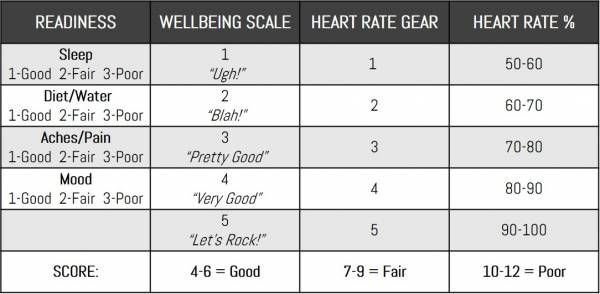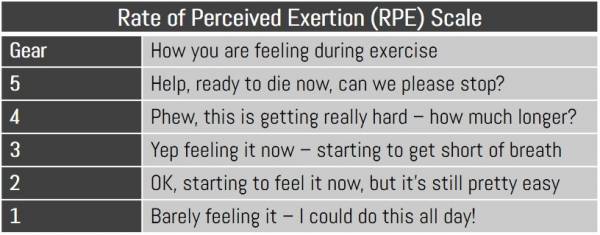This article was co-authored by Dominic dos Remedios.
If you’re hardcore about your training, you’ll be familiar with the concept of pushing yourself relentlessly and having feelings of guilt if you take a day off. While the ‘no pain, no gain’ motto can make you work harder, train more, and avoid skipping sessions, it can also leave you gasping for air and bent over in pain in the name of results.
Train hard without training yourself into a hole.
You must be mindful that your wellbeing determines your state of readiness for exercise. For example, if you visit the gym for a heavy leg session and it’s at the end of a stressful day at work in which you’ve eaten junk food and not drunk enough water, then your body will be in a pre-stressed state. Similarly, if you consistently train at very high intensities, you could actually be getting less-than-optimal results as a result of the lack of adequate recovery.
The Importance of Recovery and Regeneration
Recovery and regeneration is often overlooked when it comes to fitness, but it’s a critical determinant of how effective your training is and an influential factor on the results you’ll obtain. Depending on your overall fitness level and your genetic makeup, your body can sometimes take longer than you’d have thought to recover from high intensity training. Muscle glycogen can take several days to replenish, and the rebuilding of dysfunctional mitochondria and the immune system can take weeks. So how do you know if you’re overtraining or under-recovering, and what the right intensity is for you?
Start by imagining you’re a car. Think of your engine as your cardiac fitness, remembering that engines come in varying sizes. Regardless of make or model, we each have five gears within our gearbox and need to use all of them every day, depending on what we are trying to achieve on that day (i.e. your goal), and taking into consideration the conditions and the terrain (i.e., the environment). Each gear within your body requires a slightly different fuel source (e.g., glycogen via the glycolytic pathway, fatty acids via the oxidative pathway, and ATP and phosphocreatine via the ATP-Pcr pathway).
Now let’s say you needed to get to a destination that was 200km away. If you shift straight into fifth gear, then you’d have great speed, but you’d run out of gas before you reach your destination. And if you stay in first gear the whole way, then you would eventually get there but it would be a very slow journey.
This is exactly how your energy system works. You have to use all five gears. Training in one gear all the time is incomplete; after all, what would happen to your car if you drove at high speeds in fifth gear all the time? It would be difficult to turn corners, you’d probably crash regularly, and your tyres would be bald. In anatomical terms, you’d be experiencing overuse injuries.
The Daily Readiness and Programming Chart
Let’s look at a practical way to see how ready you are to train each day and at what intensity you should be training.
This scientifically developed energy system chart will help you define the best gear (i.e. heart rate percentage) for you to train in, whether your goal is fat loss, muscle gain, sports performance, or wellness. This chart also takes into account your wellbeing and overall readiness for exercise. Applying this tool will ensure you get the results you want, without the risk of overtraining or under-recovering.
Currently, the most accurate way to determine which gear you are training in is to measure your heart rate percentage. This is most accurately done using a heart rate monitor. Once you’ve worked out what gear you’re training in, it’s time to apply it to the Daily Readiness and Programming Chart.
The Daily Readiness and Programming Chart

[Chart credit: The Personal Training Academy]
If you don’t train with a heart rate monitor you can also use a Rate of Perceived Exertion (RPE) scale, such as the one below.

How to Use the Daily Readiness and Programming Chart
Readiness: This is simplistically assessing how much stress you are currently experiencing. Rate the 4 items on the 3–point scale. Tally up the total score to find the your Readiness level for exercise each session.
Wellbeing Scale: This is assessing how you feel generally each session. Rate how you feel on the 5-point scale. This score should correlate with your Readiness score.
Heart Rate Gear: This tells you the heart rate zone that will be most appropriate for you train in today. It will typically match your Wellbeing Scale and Readiness score. It does not mean you cannot go into a higher zone, but if you do, you may wish to minimize how much time you spend there.
Heart Rate Percent: This shows you the percentage of your maximum heart rate for each zone.
- Rate your Readiness (the first column) by scoring yourself in the four areas of sleep, diet/water, aches/pains, and mood.
- Compare this score to the Wellbeing Scale (the second column). They should match.
- Next, find out which Heart Rate Gear column (the third column) and Heart Rate Percent (the fourth column) is most appropriate for you to train in on this day. Typically, it will match your Wellbeing Scale and Readiness score.
Your resulting scores don’t mean that you can’t go into a higher gear or heart rate percentage, only that you should consider limiting the time you spend in those higher gears. Doing so may mean you are creating more stress than your system can handle on this particular day.
Get Ready for Awesome Results
The key is to listen to your body every day, and use this chart to find your ideal training intensity. A training regime that takes into account recovery and regeneration will yield better results, fewer injuries, and less burnout.
Unconvinced about the power of a great recovery strategy? Read more:






